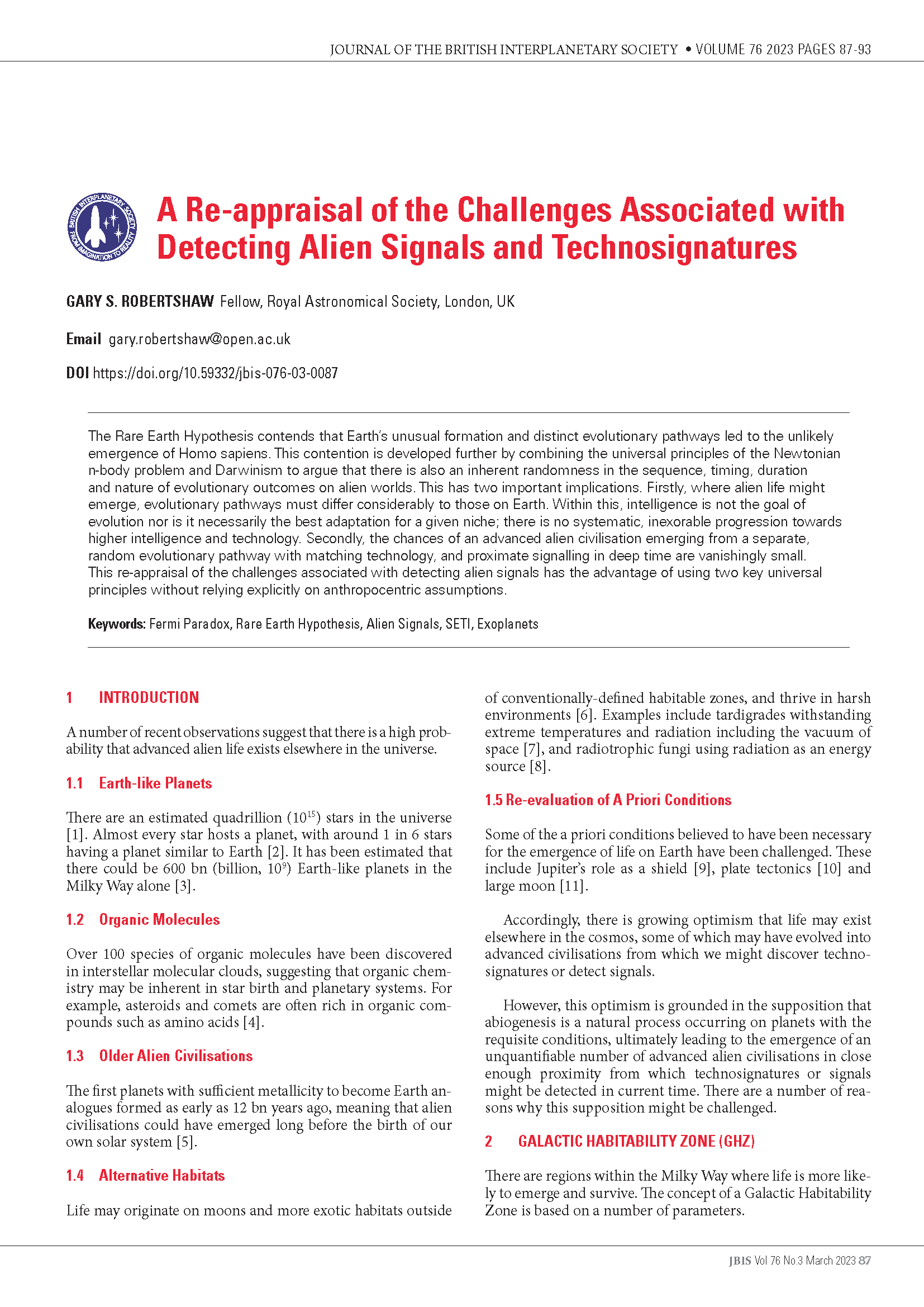A Re-appraisal of the Challenges Associated with Detecting Alien Signals and Technosignatures
£0.00
Gary S. Robertshaw (2023), JBIS, 76, pp.87-93
Refcode: 2023.76.087
DOI: https://doi.org/10.59332/jbis-076-03-0087
The Rare Earth Hypothesis contends that Earth’s unusual formation and distinct evolutionary pathways led to the unlikely emergence of Homo sapiens. This contention is developed further by combining the universal principles of the Newtonian n-body problem and Darwinism to argue that there is also an inherent randomness in the sequence, timing, duration and nature of evolutionary outcomes on alien worlds. This has two important implications. Firstly, where alien life might emerge, evolutionary pathways must differ considerably to those on Earth. Within this, intelligence is not the goal of evolution nor is it necessarily the best adaptation for a given niche; there is no systematic, inexorable progression towards higher intelligence and technology. Secondly, the chances of an advanced alien civilisation emerging from a separate, random evolutionary pathway with matching technology, and proximate signalling in deep time are vanishingly small. This re-appraisal of the challenges associated with detecting alien signals has the advantage of using two key universal principles without relying explicitly on anthropocentric assumptions.
Keywords: Fermi Paradox, Rare Earth Hypothesis, Alien Signals, SETI, Exoplanets





